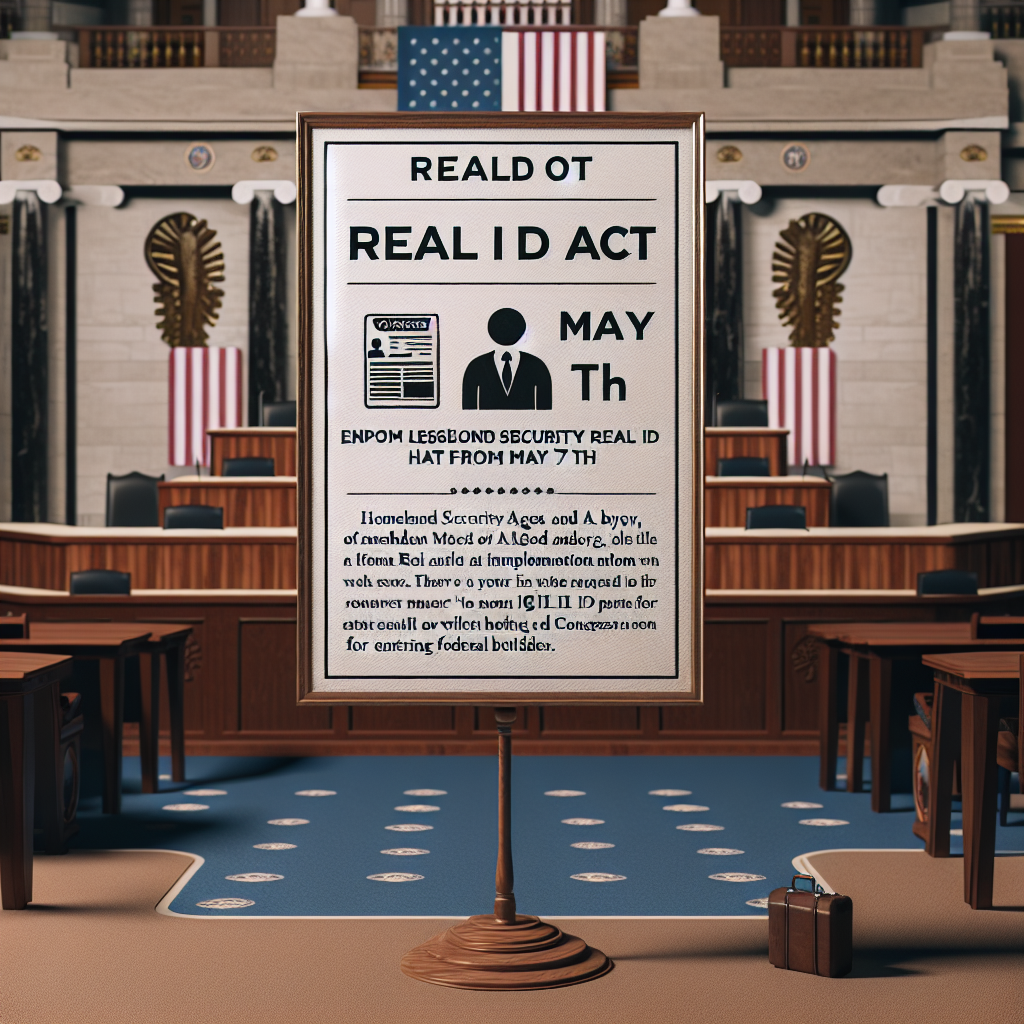On Tuesday, May 6, the US Department of Homeland Security Secretary announced in Congress that May 7 is the day the Real ID Act will be implemented immediately.
According to the Real ID Act, passengers aged 18 and above traveling within the United States by domestic flights or entering federal buildings and facilities will need to show the new version of the “Real ID,” or alternative identification such as a passport or passport card.
The Real ID Act was passed in 2005 as a law enacted after the 9/11 attacks. The law aims to enhance domestic security by establishing a standardized identification system in all 50 states and Washington, D.C. The legislation was initially scheduled to take effect in 2007, but its enforcement date has been postponed multiple times.
Homeland Security Secretary Kristi Noem attended a hearing by the Senate Homeland Security Subcommittee on Tuesday. She stated that this law had been in place for over two decades and is only now being implemented.
She mentioned that currently, 81% of passengers traveling by air within the United States meet the Real ID requirements by holding valid identification. Additionally, passengers can still board using passports and other federally approved identification.
Starting from Wednesday, passengers will still just need to queue normally and present valid identification.
“If their identification doesn’t meet the requirements, they may be directed to another line for additional verification, but they can still board the flight,” she said.
Noem added that the Trump administration believes that implementing Real ID can address a “security vulnerability.”
“Congress has spent many years reevaluating this law and deciding on whether to amend it or abolish it. The Biden administration chose to enforce this law on May 7, and we intend to comply with this requirement,” the Homeland Security Secretary said.
“Therefore, we will ensure as smooth a implementation as possible to ensure passengers can travel according to their planned itineraries. However, we must also inform everyone that this law will be enforced, allowing the government to know who is in this country, their identity, and whether they have the right to travel,” she added.
Due to concerns that airport security checkpoints may experience confusion due to ID checks, the Transportation Security Administration (TSA) has designated May 7 as a “rapid action” day.
From May 7 onwards, if passengers present outdated identification at TSA checkpoints that do not meet the requirements, they will undergo additional screening.
TSA officials will use a secondary identification verification process similar to when identification is lost or stolen during travel. This may be a time-consuming process, so holders of outdated identification should plan to arrive at the airport at least three hours before takeoff, rather than the usual two hours for domestic flights.
If the secondary identification verification fails, passengers will not be allowed to enter the security checkpoint or boarding gate area. The agency had previously stated that enforcement policies would be implemented in stages.
The indicator of a “Real ID” is a black or gold star in the upper right corner of the identification document. Sometimes, the star may appear in a circle, and California places their star within a golden bear.
Not everyone needs a Real ID. If you aren’t flying or entering federal government buildings, your old identification will remain valid until expiration.
Real IDs are issued by state Department of Motor Vehicles (DMV) as an enhanced form of identification. Applicants need to provide valid proof and apply in person. Supporting documents include: valid identification, identity proof (such as a passport or certified birth certificate), social security number and birthdate verification, and two documents showing state residency rights, such as utility bills, credit card statements, or lease agreements.
New identification cards will be mailed by states, so residents should expect to wait around two weeks to receive their new documents.

